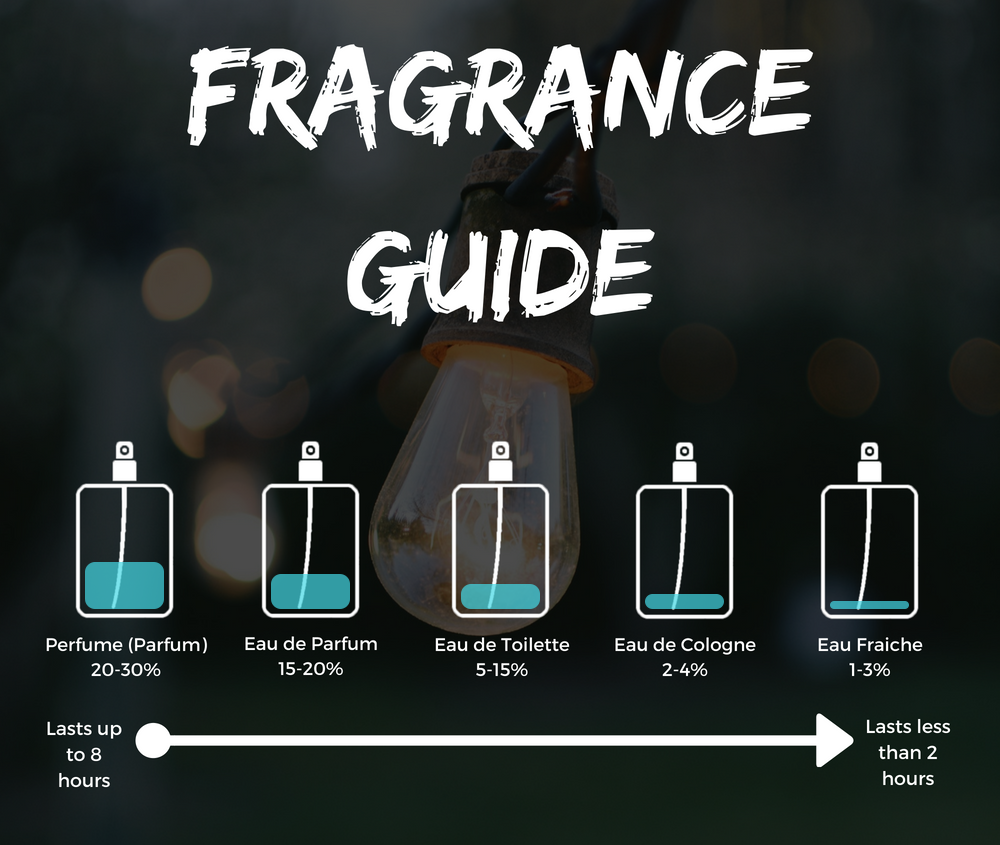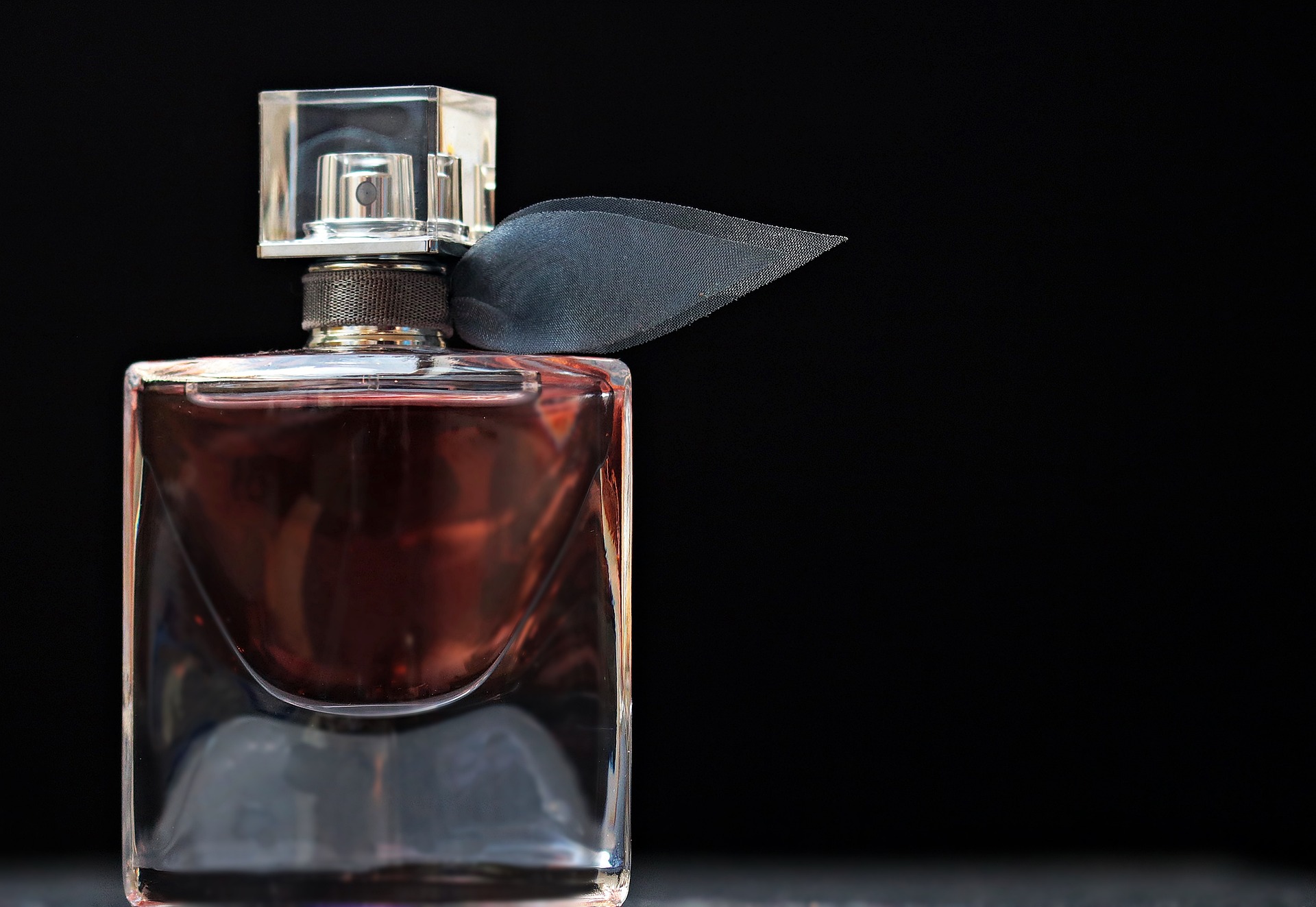Have you ever found yourself in a shop with divine smells and numerous bottles of perfume with fascinating names and beautiful decorations, and asked yourself what is inside those small vessels of fragrances? In the following paragraphs, this article will take you on a journey through the world of fragrances, exploring the types of perfume and notes – while knowing the details of each fragrance.
Understanding Perfume Types
To understand the principles of fragrances and to decide which of them belongs to which group of perfumes, it is necessary to determine some types of perfumes. They are grouped according to the levels of concentration, which defines the strength and duration of the concentration.
The Perfume Concentration Spectrum
Perfumes are classified based on their strength and lasting power, determined by the amount of perfume oil concentration they contain. Here’s an easier way to understand it:

Parfum (Extrait de Parfum)
Strength: Very strong
Lasting For: 8-12 hours
Perfume Oil Concentration: 20-40%
Details: Parfum is highly concentrated and expensive. It offers a rich, long-lasting scent ideal for special occasions. Due to its intensity, only a small amount is needed.
Eau de Parfum (EdP)
Strength: Quite strong
Lasting For: 6-8 hours
Perfume Oil Concentration: 15-20%
Details: Eau de Parfum is slightly less intense than Parfum but it provides too a long-lasting fragrance suitable for both day and evening wear.
Eau de Toilette (EDT)
Strength: Moderate
Lasting For: 4-6 hours
Perfume Oil Concentration: 5-15%
Details: Eau de Toilette is lighter than EdP, affordable, and perfect for daily use—especially in warmer climates or for daytime wear due to its refreshing scent.
Eau de Cologne (EDC)
Strength: Light
Lasting For: 2-3 hours
Perfume Oil Concentration: 2-4%
Details: Eau de Cologne has a light, fresh scent ideal for hot weather or casual occasions. It is affordable and often comes in larger bottles for generous application.
Eau Fraîche
Strength: Very light
Lasting For: Up to 2 hours
Perfume Oil Concentration: 1-3%
Details: Similar to Eau de Cologne but with more alcohol content. It provides a very light, subtle fragrance often used as a body splash or after-exercise refreshment.
Understanding the concentration of a fragrance can significantly enhance your experience and help you find scents suited for different occasions.
Exploring Perfume Notes
Perfume notes are categorized into three distinct layers: top, middle, and base notes. Understanding these layers will help you appreciate the complexity of a fragrance.
Top Notes: First Impressions
The first thing you notice immediately after applying the perfume is the top note. They are the first notes that are volatile and do not stay long, normally lasting for about 15-30 minutes.
Common top notes include:
- Citrus (lemon, bergamot)
- Pear, apple, peach
- Herbs (lavender, mint)
These refreshing scents are created to be quite noticeable and to create an implicit invitation for the consumer to explore the smelling opportunity of the fragrance in question.
Middle Notes: The Soul of Perfume
When the top notes evaporate, the middle notes, also known as heart notes, come into play. These notes, as opposed to top notes, can last for a couple of hours, enhancing the fragrance.
Examples of middle notes include:
- Floral (rose, jasmine)
- Spices (cinnamon, nutmeg)
- Primary and pleasant (melon, pear)
The middle notes are especially important for the development of the fragrance’s personality and can turn the fragrance into a completely different and full-bodied experience.
Base Notes: The Lasting Impression
The base notes make up the foundation of a scent and have long-term tenacity or strength in a perfume. They tend to rise after the middle notes have faded away and can last on the skin for several hours, sometimes even days.
Typical base notes might include:
- Woods (sandalwood, cedar)
- Resins (amber, frankincense)
- Some deeply sensual ones are musk and vanilla.
These notes are like the solid ending to a beautiful story, leaving a memorable imprint long after the initial spritz.
Understanding Scent Families
Perfumes are also categorized according to scent groups, which can help you find the kind of perfume you like.
Major Scent Families
- Floral: Sweet and romantic.
- Citrus: Bright and refreshing.
- Woody: Earthy and rich.
- Oriental: Warm and exotic.
These families encompass many subcategories, allowing everyone to find something for their nose.
Recommending Your Scent Family
- If you prefer romantic fragrances, floral types like jasmine and lilac are great choices.
- Freshness lovers might prefer citrus fragrances like grapefruit or lemon.
- For warmer and more complex scents, oriental fragrances with vanilla and amber are worth exploring.
Curating Your Fragrance Wardrobe
Just like wearing stylish outfits, investing in fragrances helps to express your unique identity and plan for different events. Here are a few tips for building your fragrance wardrobe:
Conclusion: Dive Into the Art of Perfume
Entering the world of perfumes allows you to discover thousands of scents that reflect you as a person. Understanding perfume classifications and notes is the first step into the wonderful world of scents, where each has its own story.

